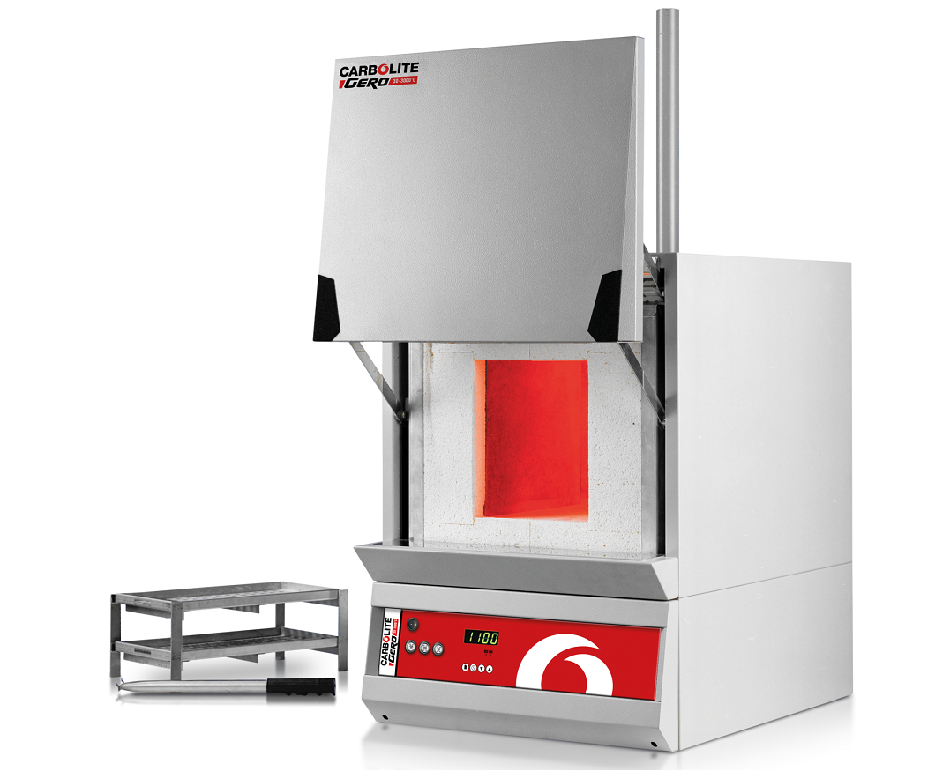Ashing, the process of removing organic material from a sample prior to analysis, is widely used in the food and petroleum industries. Ashing methodologies can be broadly split into two categories: wet ashing and dry ashing. Wet ashing involves the removal of organic material from a sample using liquid-phase reactants including oxidizing agents and combinations of acids. Dry ashing procedures – which we focus on in this article – achieve this through the controlled combustion of a sample in air.
Applications of Ashing
Dry ashing procedures all follow the same basic principle: sufficiently heating a sample in air will result in the oxidation and removal of organic material from the sample. The residual material – the ash – contains all of the incombustible compounds from the sample.
Calculation of the proportional mass of ash after combustion is useful in itself. For example, in the petroleum industry, incombustible components in fuels must be minimized, so analysis of the ash content of fuels is crucial1. Similarly, ashing can be used to analyze soil samples: comparing the mass before and after ashing reveals the total organic (combustible) proportion of the soil2.
Ashing may also be an intermediate step, after which ash constituents can be identified using analytical techniques such as mass spectrometry or chromatography1,3. In the food industry, for example, ashing and subsequent analysis of ash enables the analysis of mineral content in foodstuffs, such as salts of sodium, potassium, and calcium; and traces of other minerals4.
Ashing is frequently used as an initial process in the analysis of inorganics in any organic sample; including petroleum, plastics, and biological samples3. Large-scale ashing of plastic waste can be used to remove harmful chemicals, such as toxic metals, for safe disposal5. Ashing tests are commonly defined within standard test methods, such as ISO BS ISO 2171:2010 (Cereal) and BS ISO 1171:2010 (Coal & Coke).
Which Ashing Furnace is Right for Me?
When carrying out ashing, complete combustion of the sample is crucial to obtain accurate results. This necessitates the use of a purpose-built ashing furnace. However, due to the many different applications of ashing, there is no one-size-fits-all solution.
When selecting a furnace, it’s important to consider whether it will be restricted to use for a specific process, or whether it will be used for general heat treatment applications as well. Other important considerations include whether the process must conform to testing standards, whether the burn-off will generate fumes that could damage the furnace or present a health hazard, the size of the samples, and whether contamination of the ash with silica or alumina (the materials frequently used for furnace construction) would be detrimental.
Carbolite Gero produce a range of ashing furnaces developed for a variety of applications.
The AAF 11/3 (3 liters) and AAF 11/7 (7 liters) furnaces contain protected elements and a pre-heated airflow to provide a continuous flow of uniformly heated air, up to a temperature of 1100°C6.

For larger or higher temperature applications, the AAF 12/18 (18 liters) and 12/32 (32 liters) provide all of the advantages of the AAF design, but with a higher maximum operating temperature of 1200 °C7.
For thermogravimetric applications, where the sample mass difference is of interest, the AAF-BAL features an integrated balance, enabling continuous measurement of the sample mass throughout combustion8.
Some samples may be affected by alumina or silica contamination, which are commonly used to construct furnaces. For these sensitive applications, the GSM furnace chamber is constructed from fused quartz, which prevents sample contamination and also offers superior containment of aggressive vapors such as sulfuric and hydrochloric acids9.
References and Further Reading
- Amorim, F. A. C. et al. Determination of vanadium in petroleum and petroleum products using atomic spectrometric techniques. Talanta 72, 349–359 (2007).
- Storer, D. A. A simple high sample volume ashing procedure for determination of soil organic matter. Commun. Soil Sci. Plant Anal. 15, 759–772 (1984).
- Haldimann, M. & Zimmerli, B. Evaluation of ashing procedures for the gas chromatographic determination of flouride in biological material. Anal. Chim. Acta 282, 589–601 (1993).
- Pomeranz, Y., Meloan, C. E., Pomeranz, Y. & Meloan, C. E. Ash and Minerals. in Food Analysis 602–624 (Springer US, 1994). doi:10.1007/978-1-4615-6998-5_35
- US5239936A - Low-temperature ashing of hazardous plastic waste - Google Patents. Available at: https://patents.google.com/patent/US5239936A/en. (Accessed: 10th February 2020)
- Ashing Furnace AAF - CARBOLITE GERO. Available at: https://www.carbolite-gero.com/products/chamber-furnaces/ashing-furnaces/aaf-11-3-11-7/function-features/. (Accessed: 10th February 2020)
- Ashing Furnace AAF for optimum ashing conditions - CARBOLITE GERO. Available at: https://www.carbolite-gero.com/products/chamber-furnaces/ashing-furnaces/aaf-18-litre/function-features/. (Accessed: 10th February 2020)
- Ashing Furnace AAF-BAL with integral balance - Carbolite Gero. Available at: https://www.carbolite-gero.com/products/chamber-furnaces/ashing-furnaces/aaf-bal/function-features/. (Accessed: 10th February 2020)
- Ashing Furnace GSM with fused quartz chamber - Carbolite Gero. Available at: https://www.carbolite-gero.com/products/chamber-furnaces/ashing-furnaces/gsm/function-features/. (Accessed: 10th February 2020)

This information has been sourced, reviewed and adapted from materials provided by CARBOLITE GERO Ltd.
For more information on this source, please visit CARBOLITE GERO Ltd.